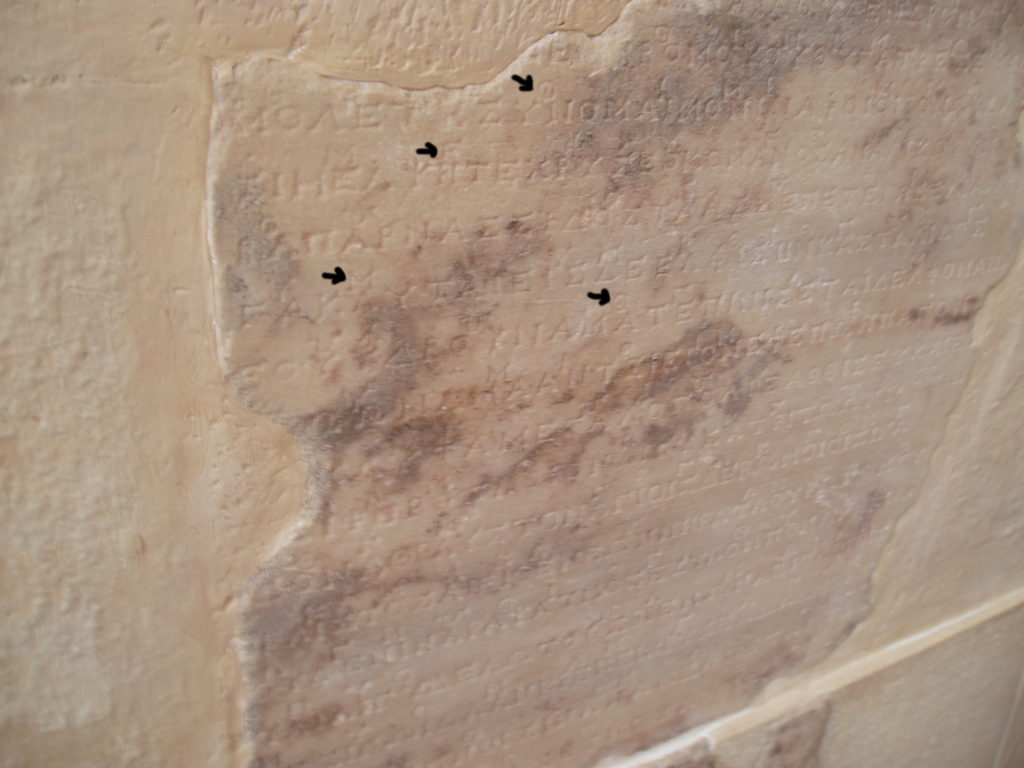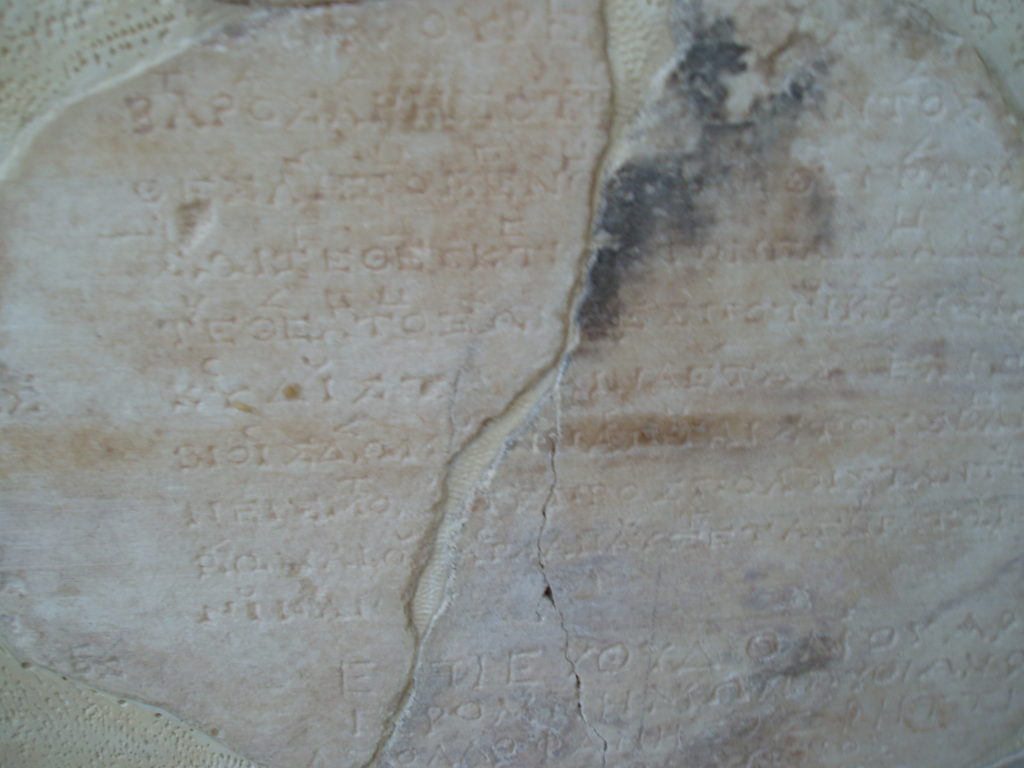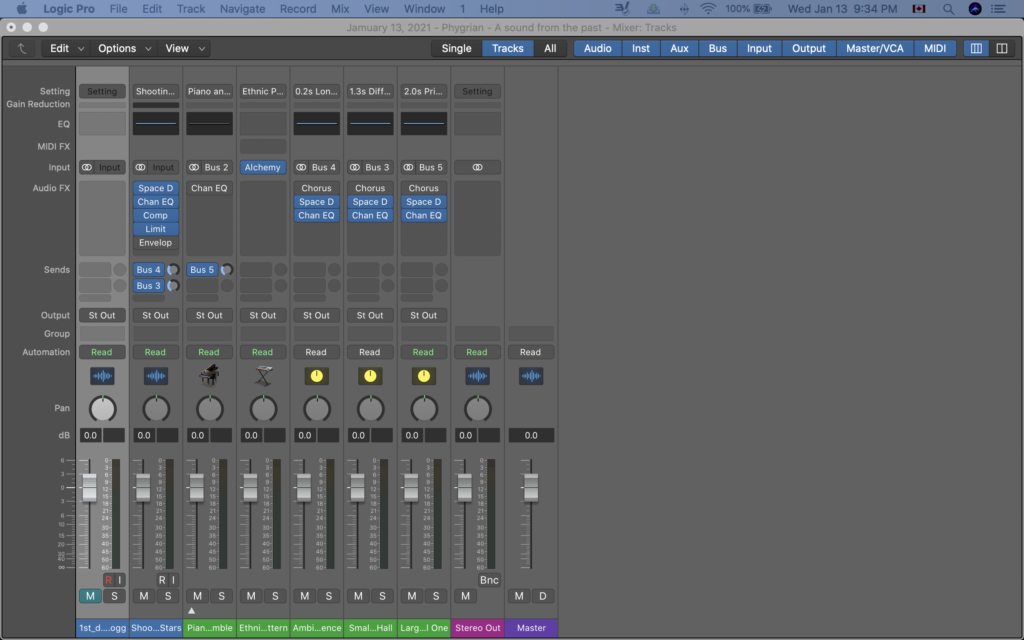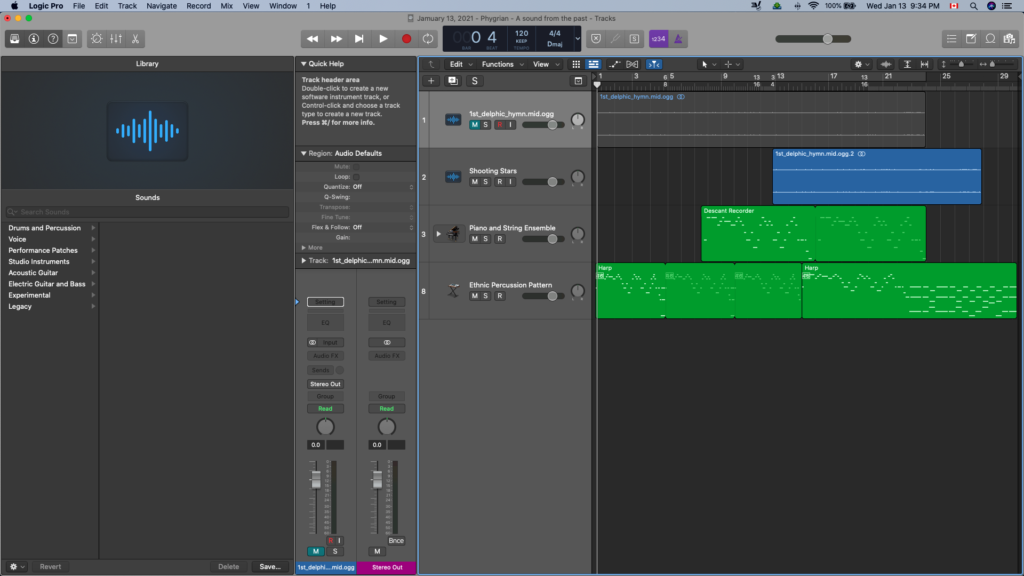Would you consider marble to be a type of a harddrive? What about an old mp3 player? Well, in one way, it is. And that’s where today’s challenge is derived from.
Today’s challenge was completed by assembling two separate marble inscriptions from Ancient Greece.
Why Ancient Greece?
Because of the Phrygian mode, which is what the First Delphic Hymn is written in.
Some may think that there is a modern Phrygian mode, and they’d be right. So, too, with a Medieval Phrygian. But I went with the Ancient Greek version.
This isn’t the first time that I’ve encountered Ancient Greek music. I’ve actually written a MA dissertation on the subject all of which was inspired by seeing the Delphic Hymn in person when I visited Delphi, Greece with my Mom so many years ago.

The hymn and its notation are actually kind of important because scholars have been able to reconstruct a lot of the sounds found on these marble slabs. The First Delphic Hymn is only one of many, many of which are collected in the tantalizingly titled book, Documents of Ancient Greek Music: The Extant Melodies and Fragments by Egert Pohlmann and Martin L. West. These guys were some of the big wigs in Ancient Greek music when I was writing my thesis back in the day.
Those two, along with a handful of others, meticulously collected, documented, and transcribed the old notation and made sense of as best they could. The study of epigraphy (ie, writing) on stone is hard enough, but throw in some odd marks, wear and tear and some missing pieces, and you have to be seriously dedicated to rebuilding these things. Here’s another look at the Delphic Hymn:
While they were academically studying these fragments, there were other musicians building their own instruments based on ancient Greek texts and then attempting to replicate the sounds they represented. I’ll let you look those up and have a listen.
I wasn’t about to try to recreate what’s already been done. Instead, I wanted to see what could be done with those leftover notes.
So, today’s track is a compilation of two tracks: the First Delphic Hymn (as reconstructed on Wikipedia) and the Seikilos Epitaph. I know the purists might point out that only the Delphic Hymn is in the Phrygian (and then only the first part, the other two parts are in a different mode) while the Seikilos is in Mixolydian. That’s fine, because I changed it up anyway.
Since the Delphic Hymn was only in .OGG format and I couldn’t find a MIDI file to play around with, I left that as is and instead changed up the effects on the track. I added the “Shooting Stars” effect which gave it a more gentle feeling than something like the “Arcane” Drone Tone, which was tempting, but just too much to listen to. You can hear the original on Wikipedia.
(https://en.wikipedia.org/wiki/Delphic_Hymns#First_Delphic_Hymn)
But you don’t hear the Delphic Hymn at first, instead, you hear some drumming. That’s the Seikilos Epitaph but with the “”Ethnic Percussion Pattern” thrown on top. If it wasn’t for the percussion you’d be listening to a harp instead, which would be mimicking the cithara of Ancient Greece. (The cithara is that stringed instrument you see a lot of ancient myth figures holding, such as Pan or Apollo. Shaped in a “U”, it has a bar that runs across the top of the “U” over which are strung four strings that attach to the bottom, or body, of the “U” shape.)
You’ll then hear a piano kick in along with one or two sets of strings. Originally this was played by the aulos, a type of ancient recorder or wind pipe but here it’s recreated using the “Piano and String Ensemble” effect.
I then repeated both sections a few times and then overlayed the Delphic Hymn. I didn’t touch any of the knobs on the mixer. Here are the project’s screenshots:
You might detect a sound and tempo change throughout the track. This had something to do with the MIDI files as I imported them with their own tempo. I’m guessing the original notation suggested a slow down of tempo as the song progressed (the epitaph is assumed to be written for a man’s wife who had passed away).
The version I used of the Seikilos Epitaph was recreated by Jim Paterson (at least his name is on the downloadable score) which you can find at mfiles.co.uk. (https://www.mfiles.co.uk/scores/seikilos-epitaph.htm).
Overall, not the most original creation of my own. I mixed the files and changed up the sounds. I like the result and probably could have used this for the “Use a Sample” challenge last week. There were some other ideas I had for the track, such as reading through the text of the hymn (yes, there were words, too) but doing so would have started to overcomplicate things more than would be easy to do in my allotted time frame. So, music only, MIDI files and plugin FX applied, and done.



